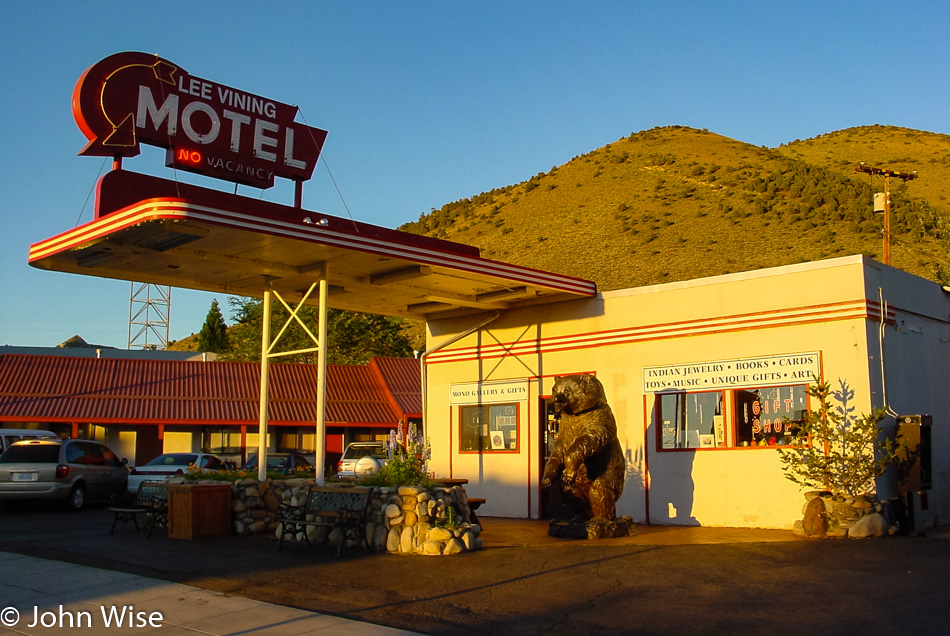
It’s not even 6:00 in the morning yet but already we’ve missed the sun coming up over the horizon. Time to hit the road for a repeat of some of yesterday. Our motel is located right next to Route 120, also known as Tioga Road, making our next move very convenient.
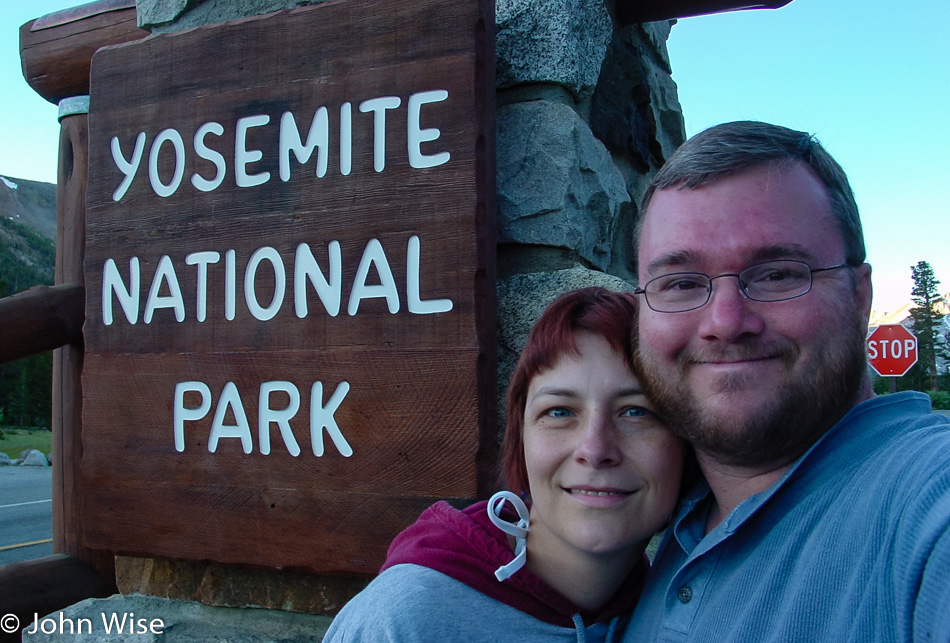
Up here by the park entrance, the sun is yet to rise, but if you look over my shoulder you can see it on the mountain tops. Yesterday was so beautiful we are throwing caution to the wind, and instead of going home and arriving at a reasonable time, we decided to drive back up the Tioga Pass to catch a few more glimpses of a side of Yosemite we’d not seen before.
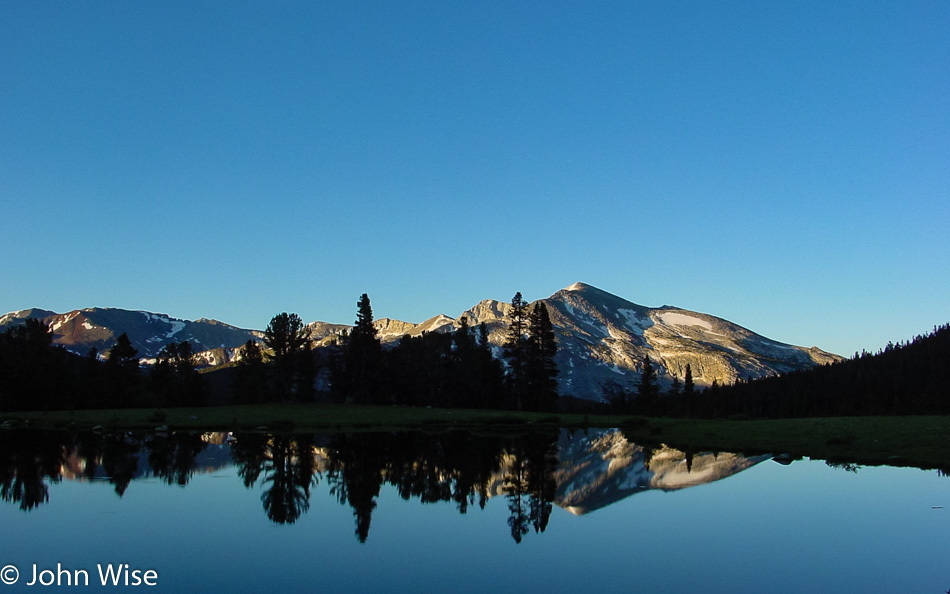
Tenaya Lake looks quite different in the early morning, not better, not worse, just different and still magnificent.
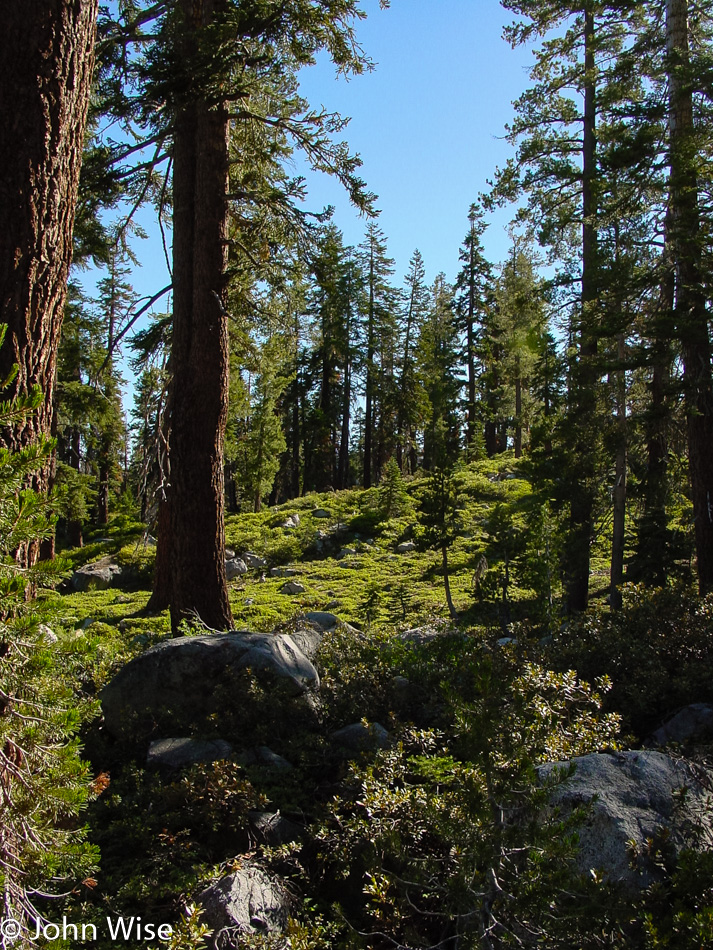
We are venturing further into the park than we were able to yesterday as we were losing daylight.

Siesta Lake was as far as we were willing to go, and we accepted that we couldn’t do it all even though we try. Just seeing upper Yosemite in this light has made our detour worth everything we have to give up in sleep.
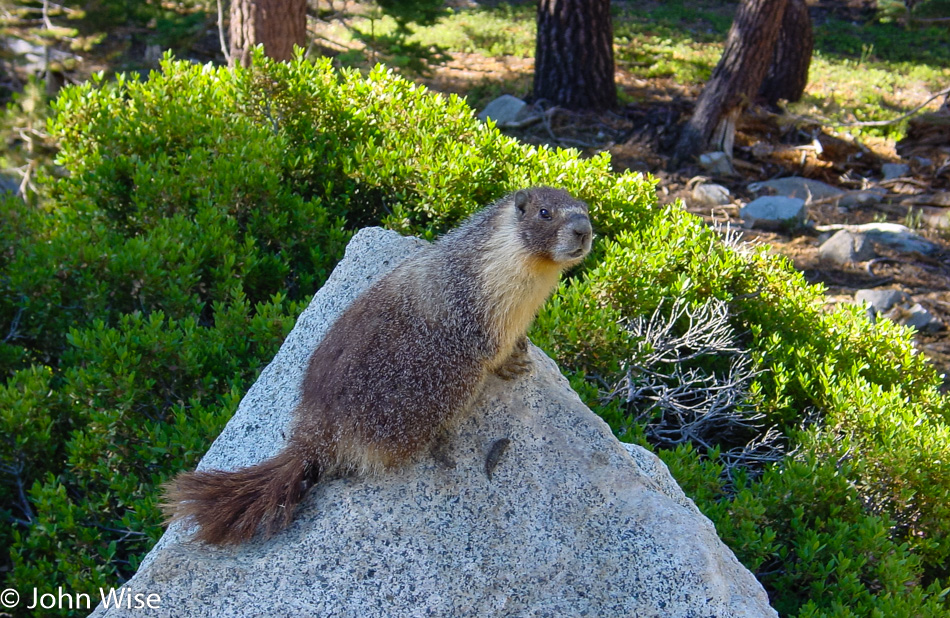
Back at our car, a proud marmot was posing with its scat that, in its world, must be a super load otherwise, why the staredown?
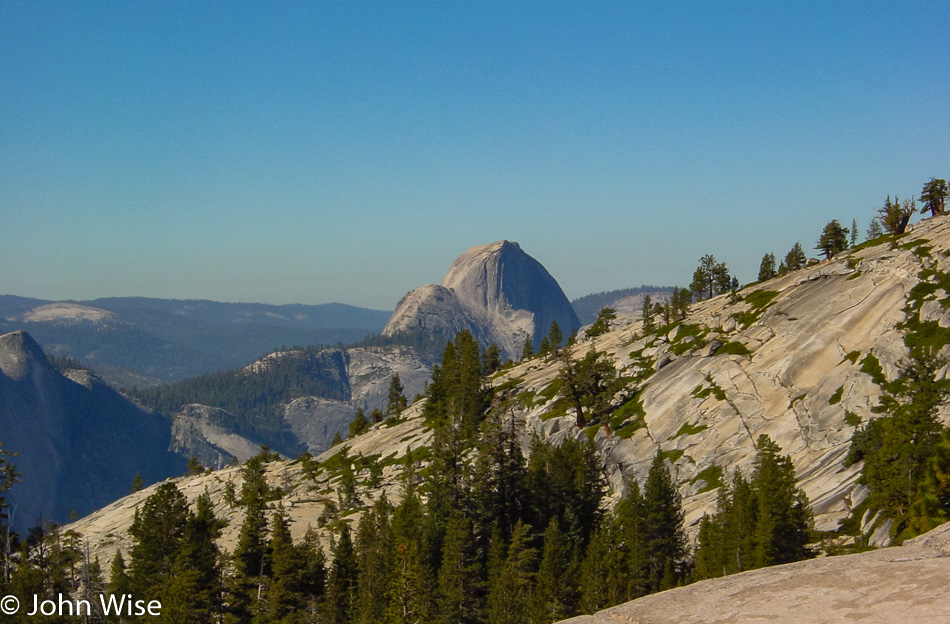
The view from Olmsted Point offers a look at Half Dome that I’m guessing few ever get to see based on how light the traffic up here yesterday and this morning was, it can easily be surmised that the majority of park visitors only go to Yosemite Valley.
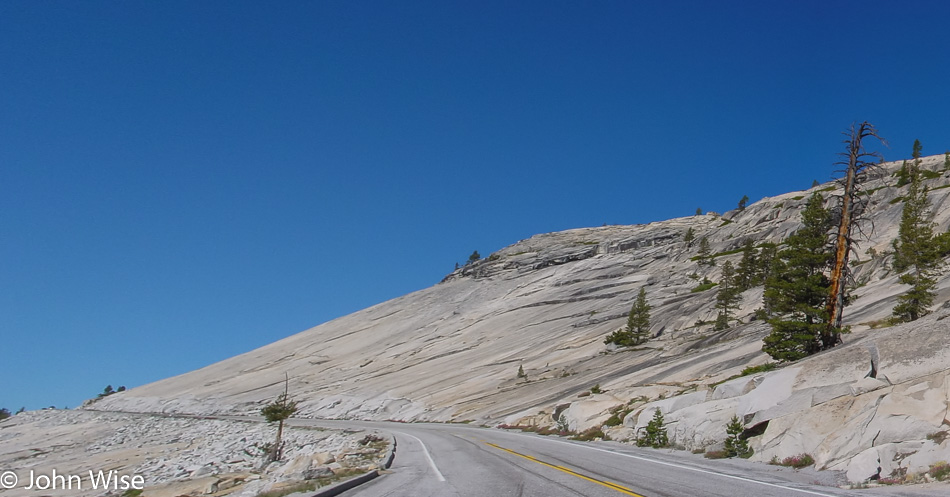
Another view from Olmsted Point.
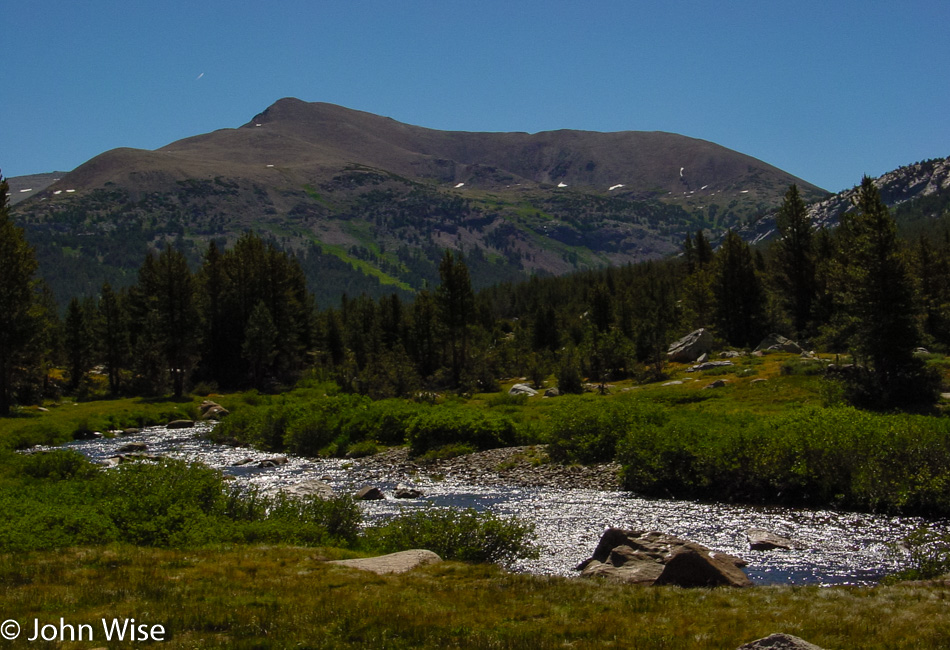
Our last encounter of greenery meeting water before we descend into the desert and its harsh environment.
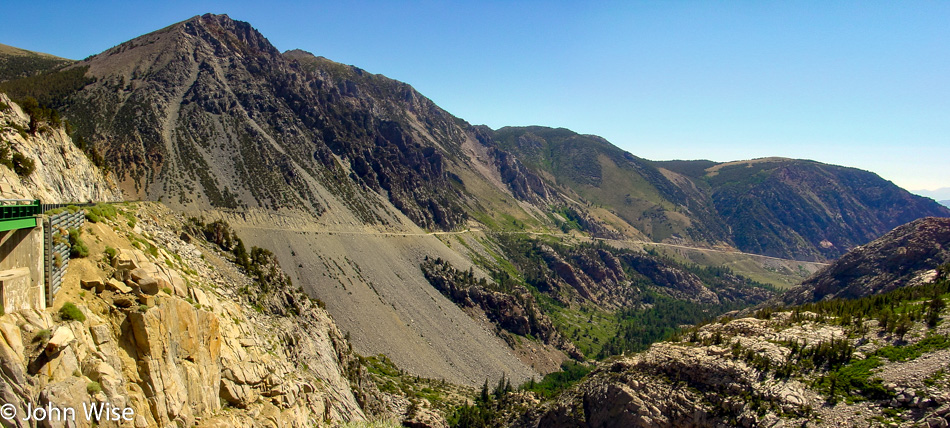
Viewed from here, driving over that scree slope looks sketchy.
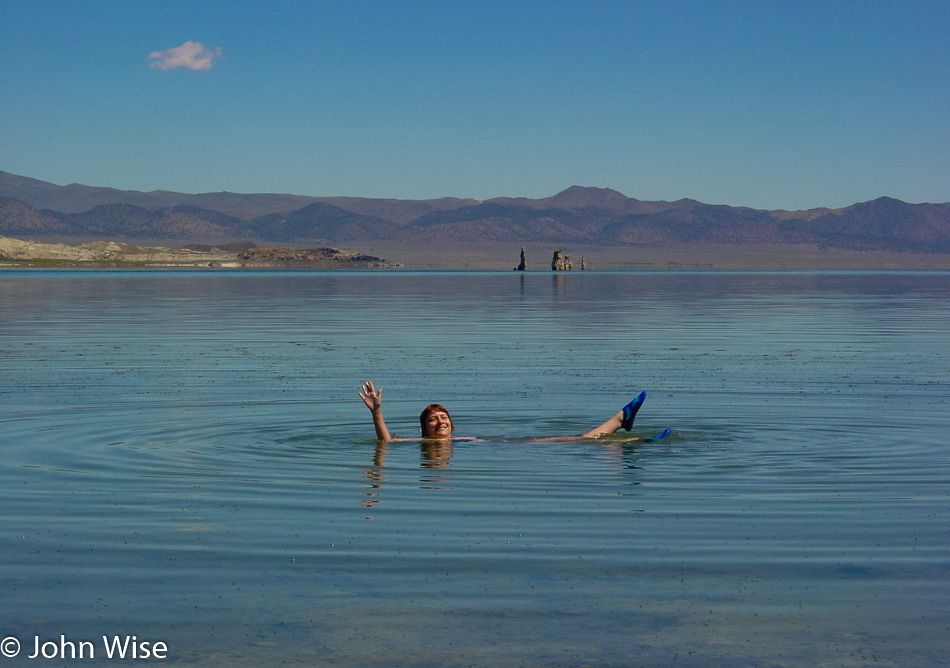
Hey anyone up for a swim in the salty water of Mono Lake with the brine shrimp and blackflies? Of course, Caroline would be interested in making her way through the swarming critters both in the water and on its surface; she’s kind of a badass in that way.
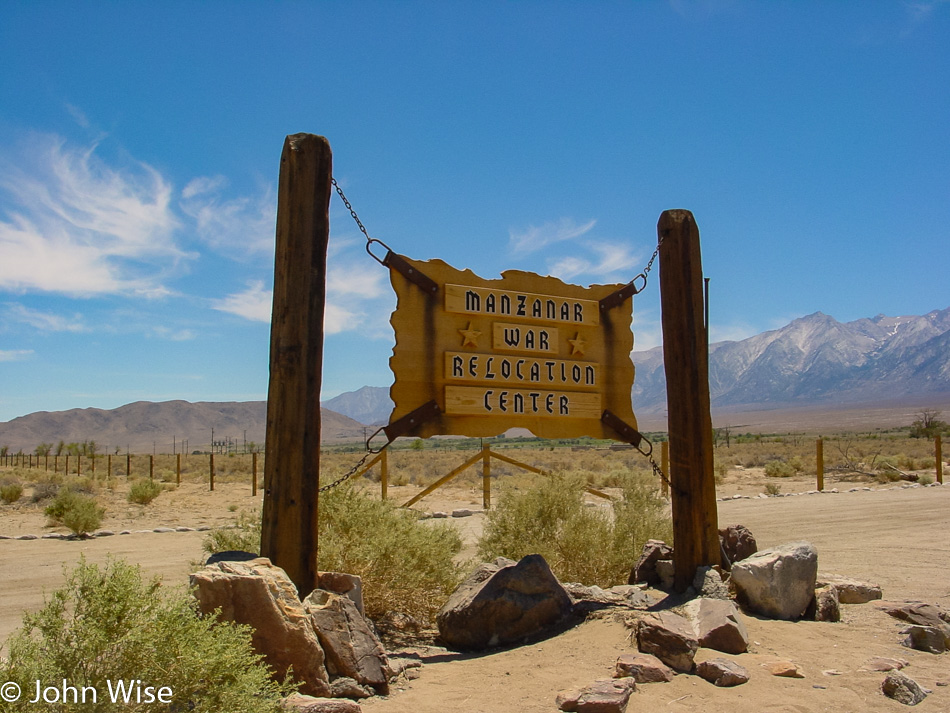
Welcome to one of America’s largest concentration camps from World War II. This is the Manzanar War Relocation Center, where a lot of Japanese American citizens ended up, but this was only one of the ten camps in America. In total, our country rounded up 120,000 Japanese and their families, removing them from their communities, land, property, and businesses and fully uprooting their faith in the American system of justice.
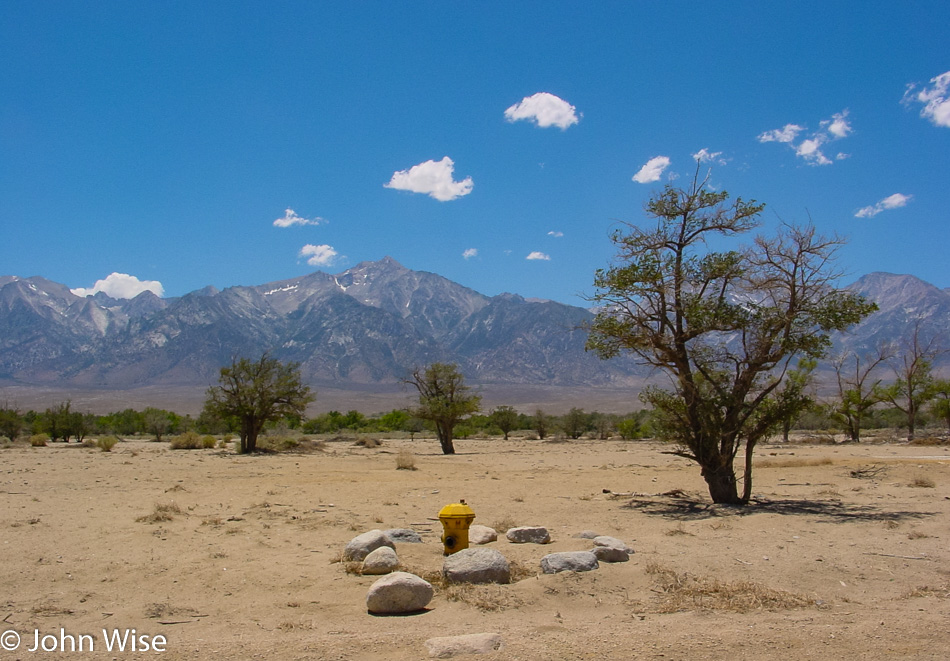
It was December 1942 when Edward R. Murrow told the American people that the German concentration camps were, more precisely, extermination camps, and yet since February of the same year, the United States was operating concentration camps of their own. While it could be argued that the American position of incarcerating these fellow Americans didn’t result in their deaths, the xenophobia that gives rise to these types of actions are the flames of hatred that, once unleashed, can be difficult to extinguish.
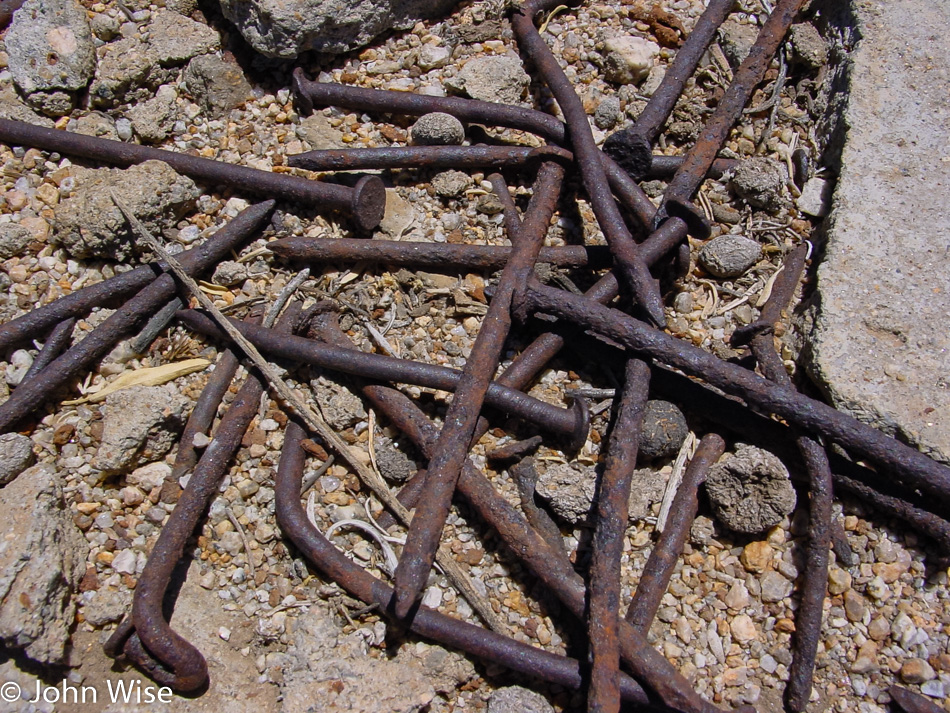
The rusty nails hammered into our freedoms, into the hearts of a loyal citizenry, into our constitution are then pulled out and left in the sun as grim reminders that our sense of right and wrong can be unpredictable and shifted like so much sand in the wind. When we institutionalize hate as we have for Native Americans, African Americans, Jewish Americans, Muslim Americans, Gay Americans, Mexican Americans, Irish Americans, and any of the other ethnic and religious groups that we as a society have sanctioned hatred for, we are not being the best we can be. We descend into petty small-mindedness and debase what we claim to stand for. We are not inclusive; we are elitists who have lost their way.
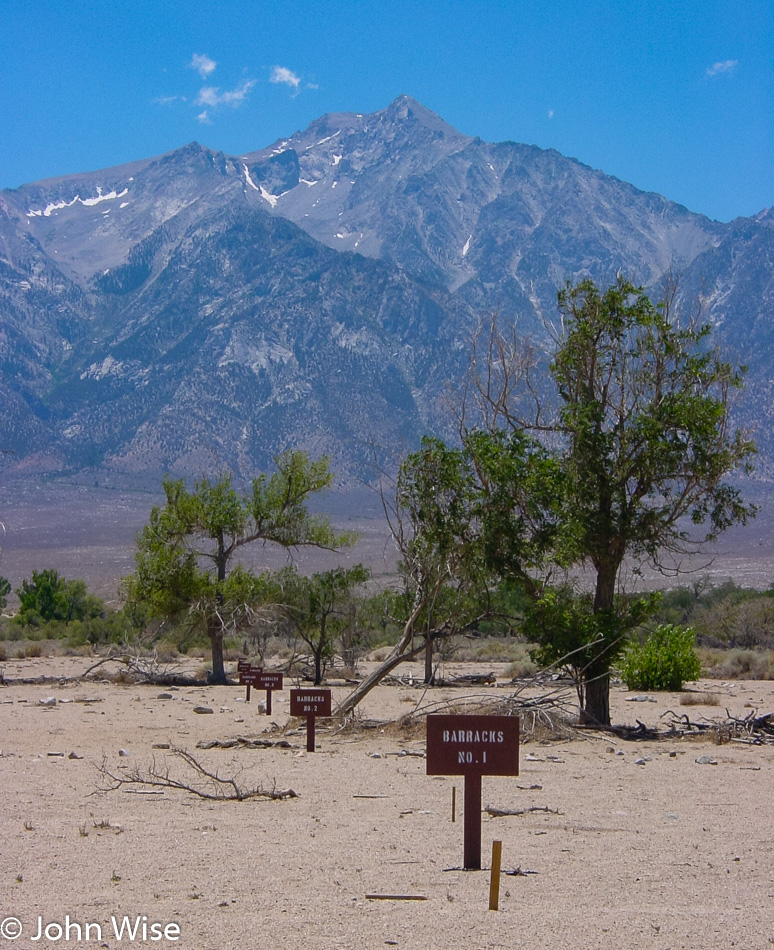
While the barracks and the majority of the manifestations that America operated a concentration camp system were bulldozed, there are still stark reminders that we have a long way to go before we can lay claim to operating a moral compass that can guide others. How is it in the 21st century that we are still talking about civil liberties, equal rights, educational disparities that appear to be institutional and biased against people of color, a correctional system that also displays an ugly bias, and the list goes on and on? While the barracks are gone now, ask a Native American how different their reservation is from a camp in the desert that took away the rights of a people, ask a Mexican American in hiding from immigration authorities how free they are beyond picking our food or cleaning our yards to travel, or ask a gay couple how comfortable they are to hold hands in public? Hell, a woman cannot even breastfeed her child in public without raising the ire of the intolerant mob.

Our country is vast; its founding documents are inclusive and welcoming. Yet our actions of isolationism scream louder than the words so eloquently placed on that parchment. There is room for all in America, but our fear of others and our disdain for those falling outside of conformity are a weakness that will continue to hamper our future until the time comes when we can confront our stupidity for what it is.

The deep-fried zucchini was pretty good, but the Mexican food was HORRIBLE.
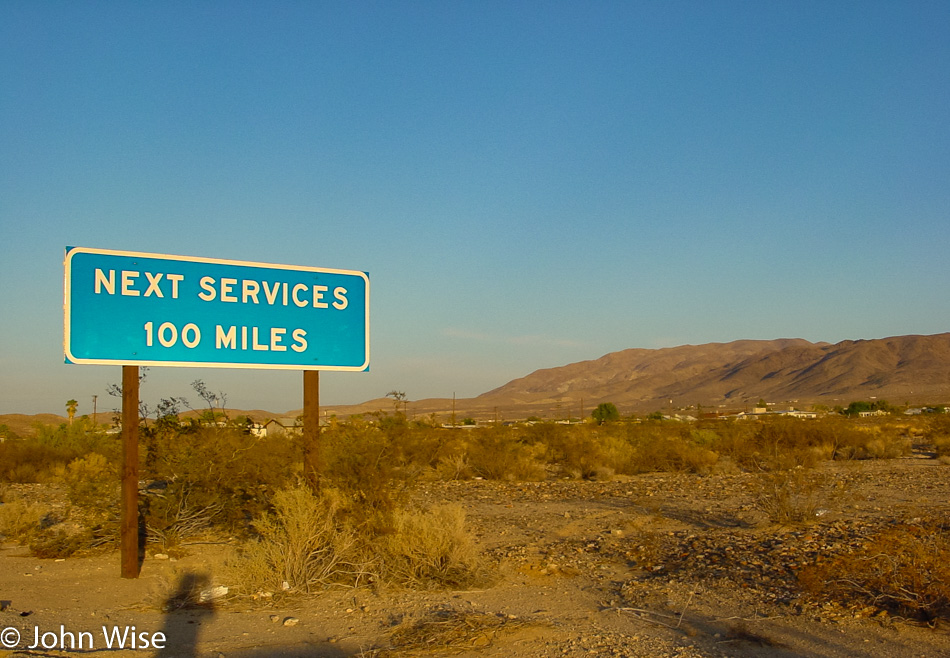
This is one of those signs that let you know just how big America is. Never in Europe would you be warned that you will not find services for the next 162 kilometers; as a matter of fact, you can’t drive 15 km in Europe without running into another village.
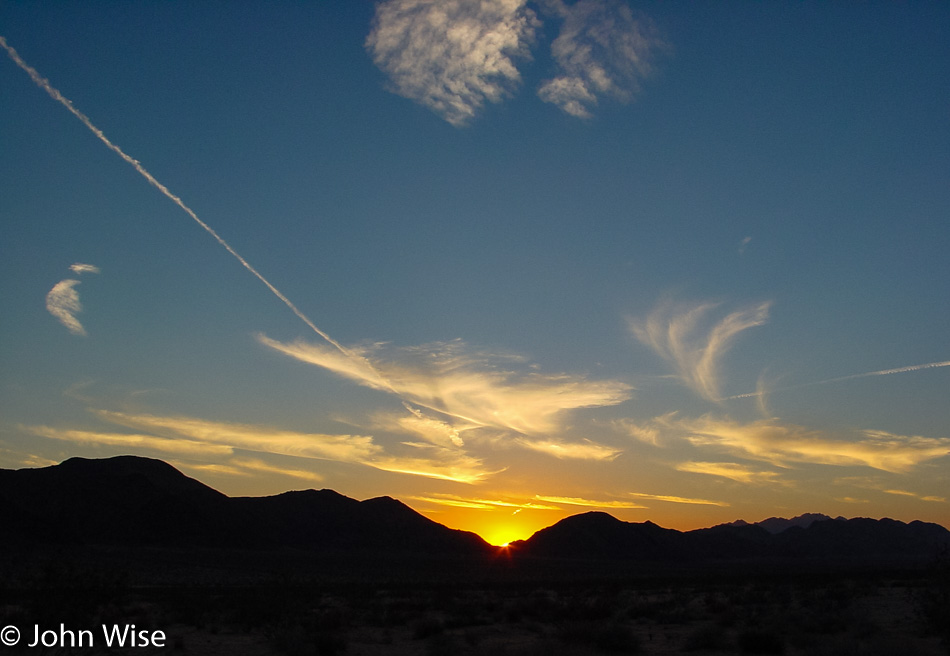
The sun sets on the West and our Independence Day adventure. Tomorrow, that very same sun will return, creating a new dawn, but too many of us will not wake up to this idea of reinvention and new adventures; we will instead drag the same old version of ourselves out of the previous day. Race past your habits and desire to stay in place and get out on the road, both in reality and metaphorically. The world is ready to be embraced and experienced, even if it’s in fits and spurts that don’t allow for total immersion. Better to have tasted the victory of knowledge and beauty than to be a prisoner of an outmoded construct of physical and mental stagnation.